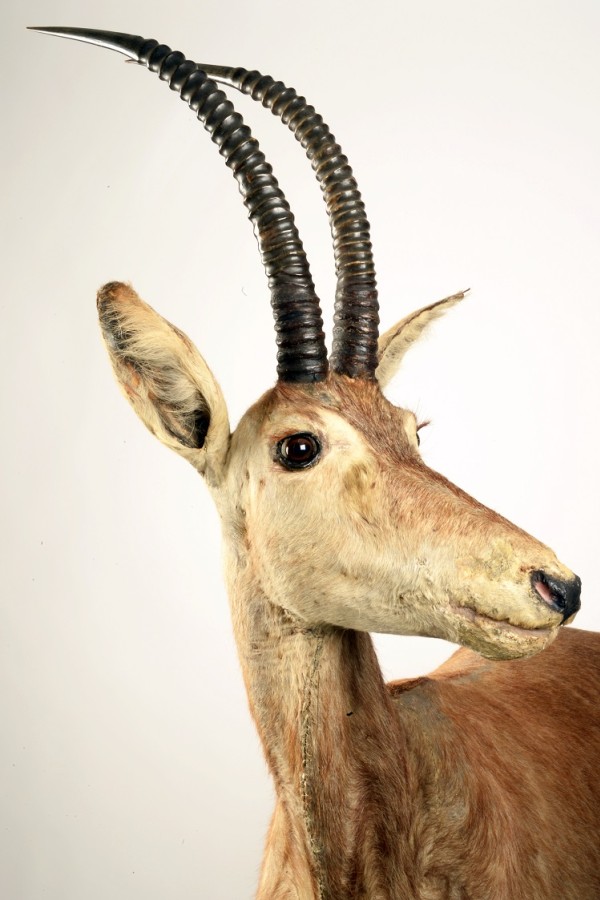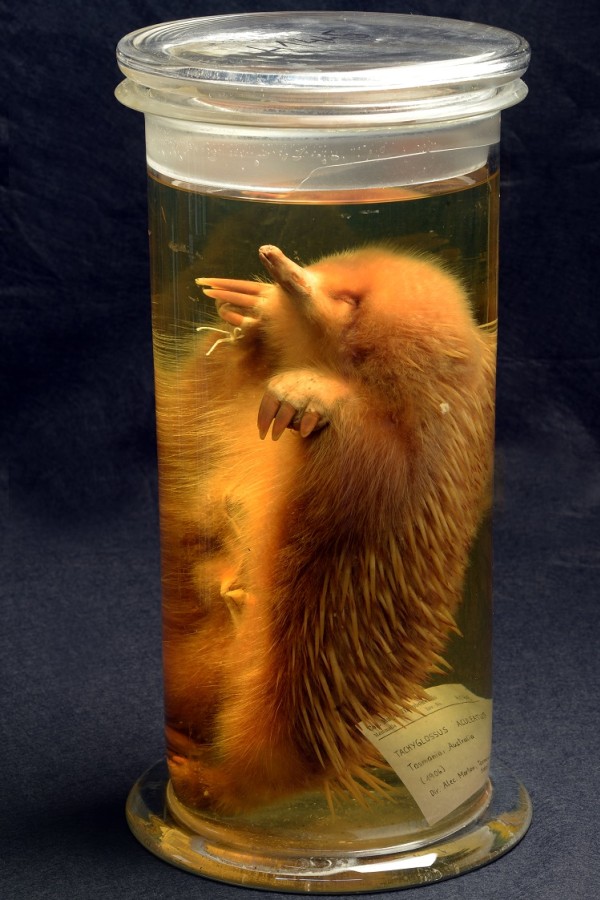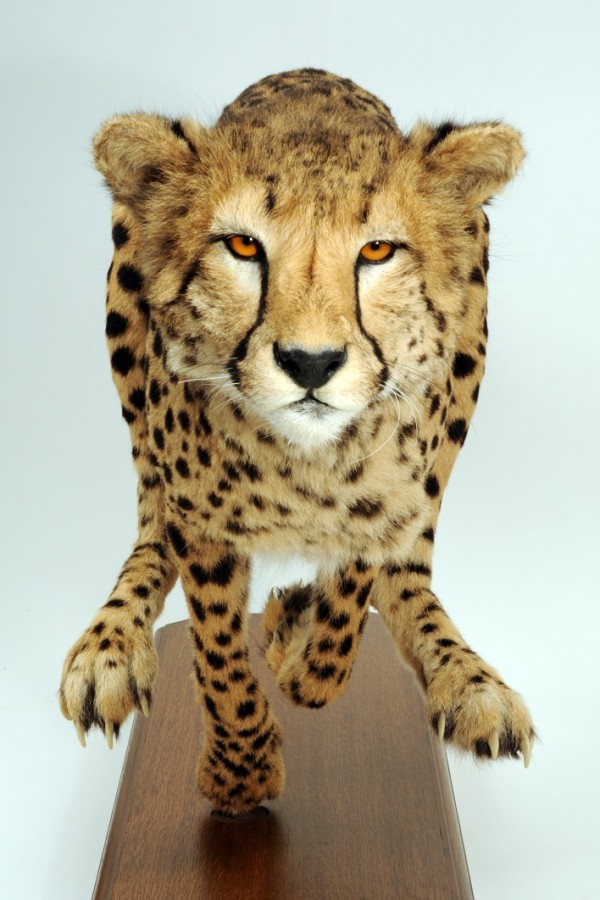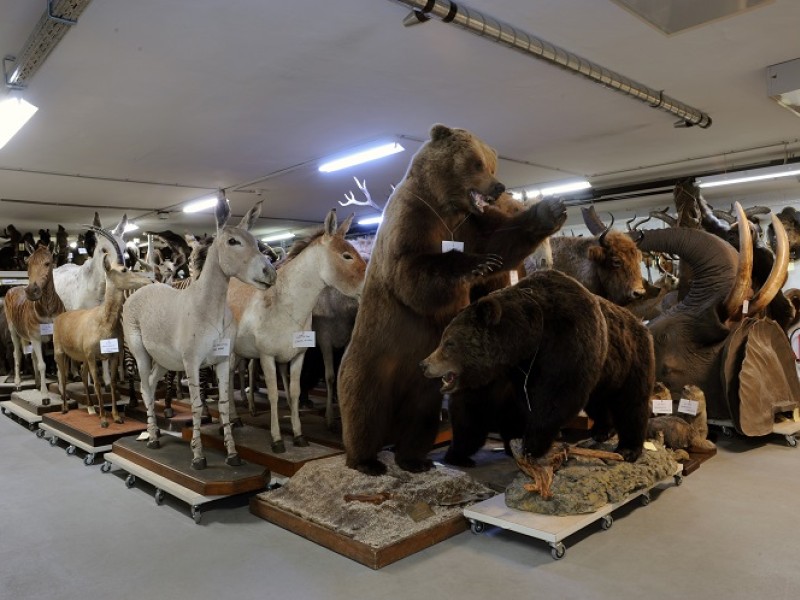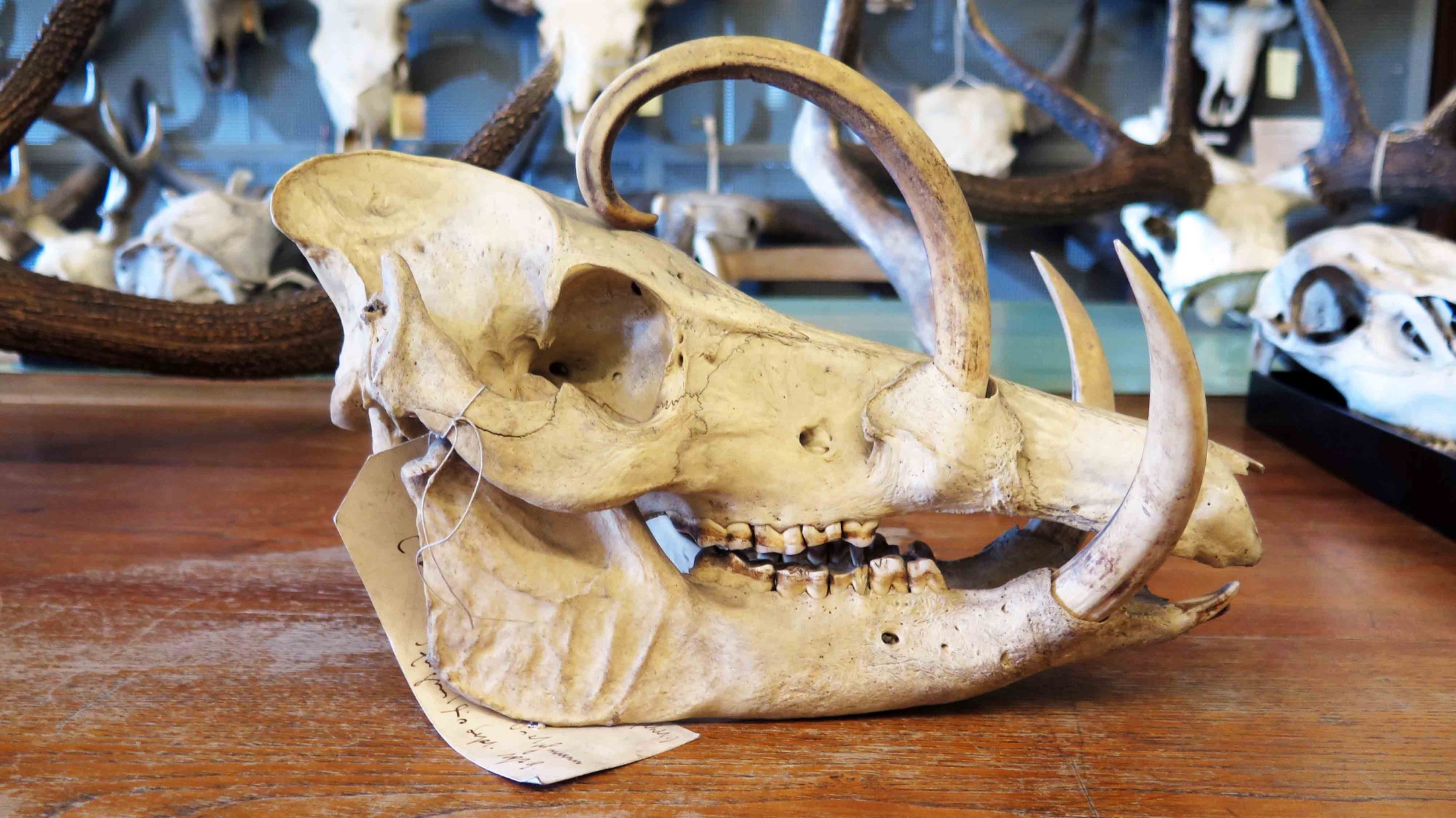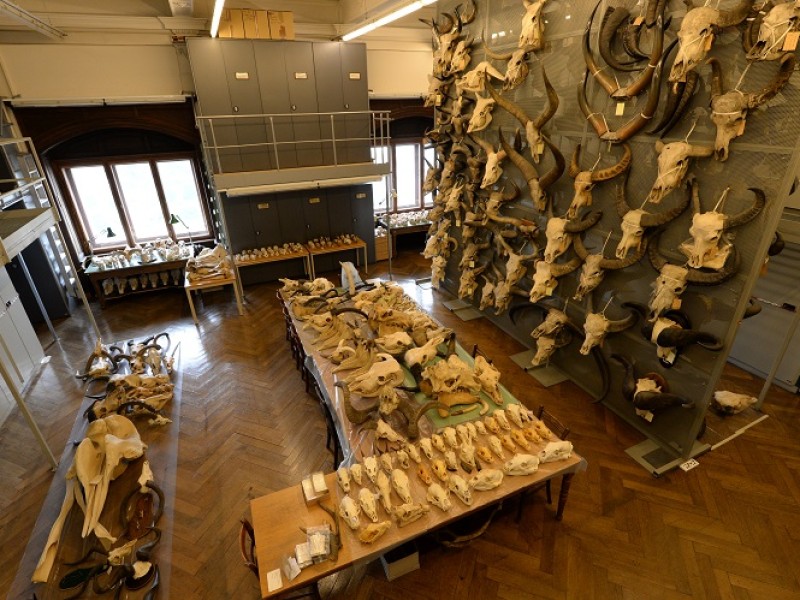The collection consists of skeletons, study skins, furs and stuffed specimens, as well as specimens preserved in alcohol.
Study skins are uniformly prepared specimens for scientific purposes. Stuffed specimens are artfully finished for exhibition
purposes. They show the animal in the most natural position possible. The collection of mammals preserved in alcohol is small,
however it is now in the process of being expanded in view of the fact that DNA for genetic studies is much easier to extract
from specimens preserved in alcohol, than in dry preservation.
Study skins, skulls and the major part of the skeletons are stored in huge metal cases in systematic order. Stuffed specimens
not on exhibition and skins are located in an air-conditioned basement storage area. The particularly valuable specimens of
extinct mammal species (blue buck, quagga, thylacine or Tasmanian wolf, Syrian onager and Somali wild ass) are also stored
here for conservation purposes. Mounted skeletons and antlers, as well as whale skulls and skeletons, are stored in adapted
basement rooms.
A major focus of the collection comprises holocene mammal remains from cave floors. They constitute the most important source
for studying the postglacial re-colonisation of the Eastern Alps by mammals. This material was collected mainly by Austrian
speleologists.
The scientific collection may be accessed by interested persons upon appointment by telephone or in writing.

